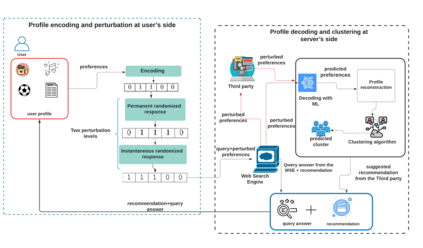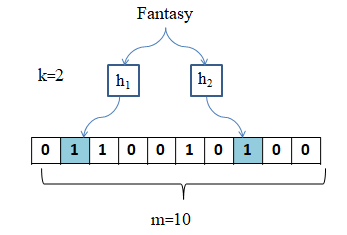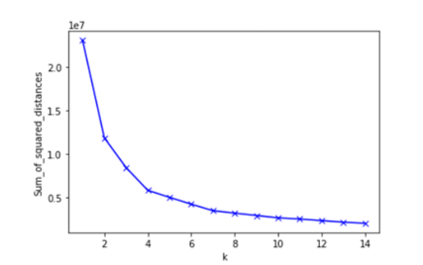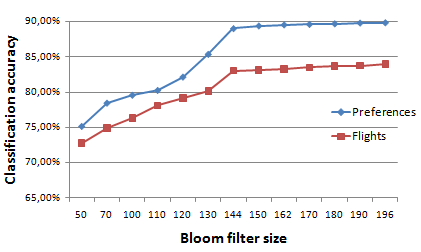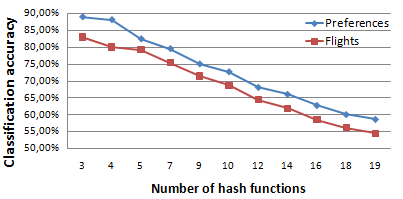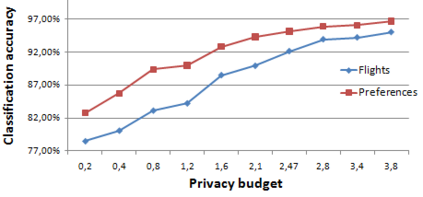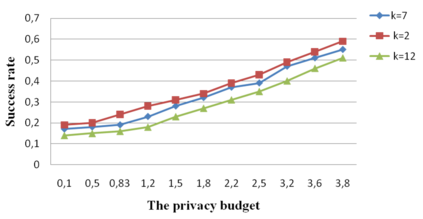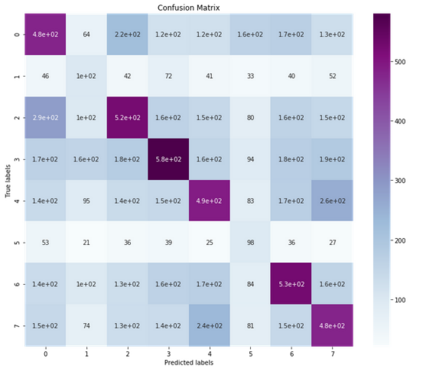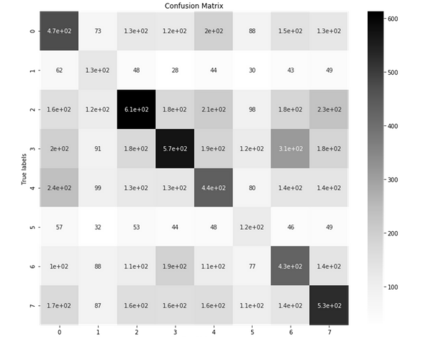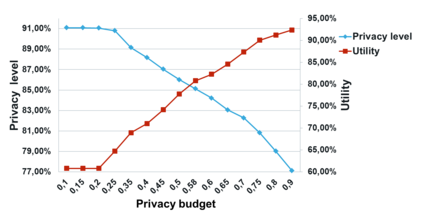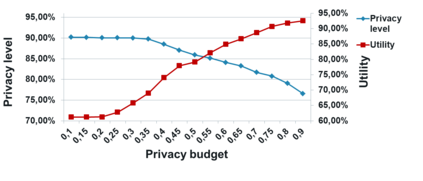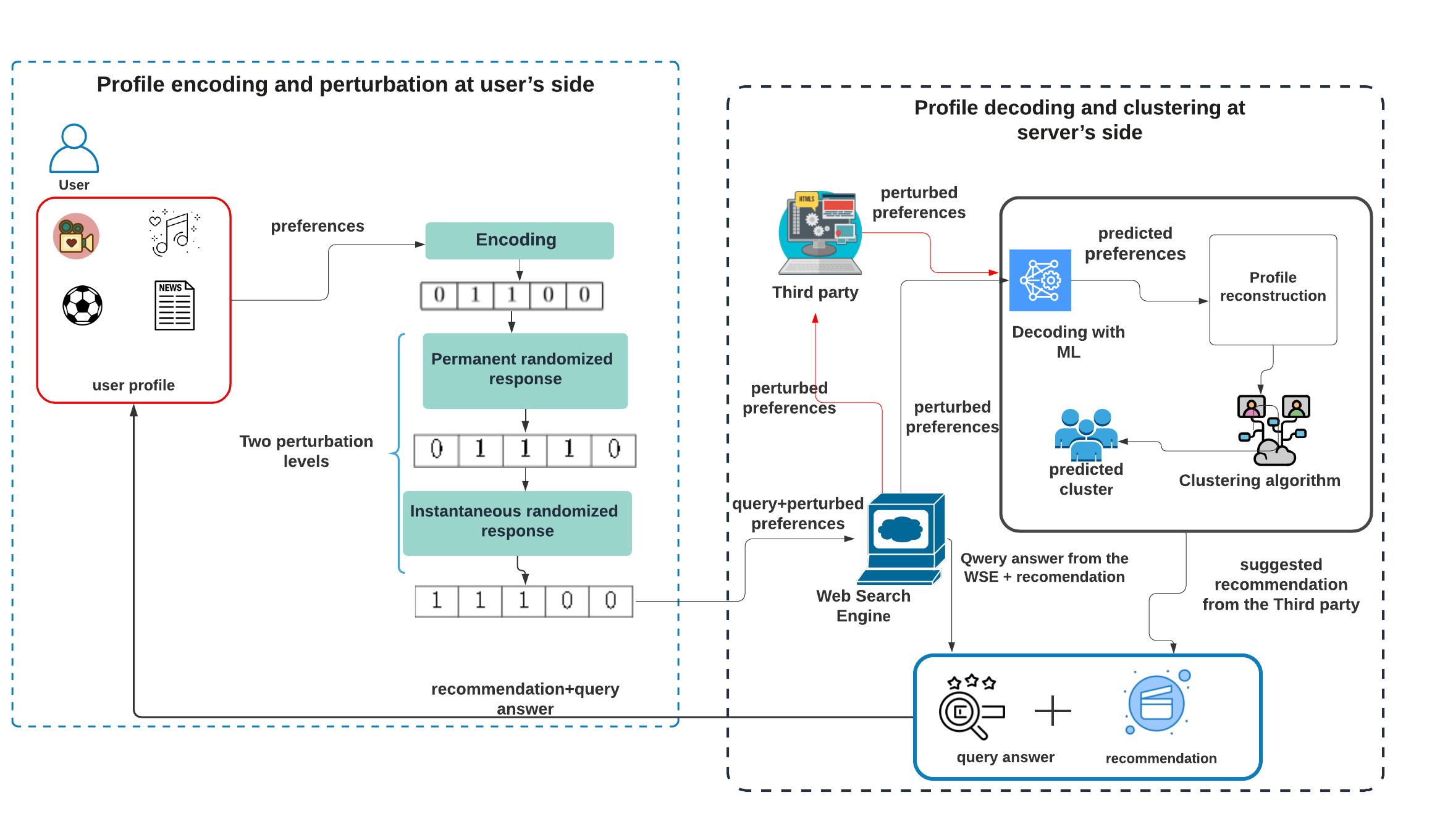This paper proposes a new recommendation system preserving both privacy and utility. It relies on the local differential privacy (LDP) for the browsing user to transmit his noisy preference profile, as perturbed Bloom filters, to the service provider. The originality of the approach is multifold. First, as far as we know, the approach is the first one including at the user side two perturbation rounds - PRR (Permanent Randomized Response) and IRR (Instantaneous Randomized Response) - over a complete user profile. Second, a full validation experimentation chain is set up, with a machine learning decoding algorithm based on neural network or XGBoost for decoding the perturbed Bloom filters and the clustering Kmeans tool for clustering users. Third, extensive experiments show that our method achieves good utility-privacy trade-off, i.e. a 90$\%$ clustering success rate, resp. 80.3$\%$ for a value of LDP $\epsilon = 0.8$, resp. $\epsilon = 2$. Fourth, an experimental and theoretical analysis gives concrete results on the resistance of our approach to the plausible deniability and resistance against averaging attacks.
翻译:本文提出了一个保护隐私和实用性的新的建议系统。 它依赖于本地差异隐私( LDP), 让浏览用户向服务提供方传输其噪音偏好配置, 即受扰动的Bloom过滤器。 方法的原始性是多方面的。 首先, 据我们所知, 这种方法是第一个方法, 包括用户方的两个扰动交易- PRR( 永久随机反应) 和 IRR( 即时随机反应), 而不是完整的用户配置。 其次, 建立了一个完整的验证实验链, 以神经网络或 XGBoost 为基础, 将他吵闹的偏好偏好偏好配置算法传输给服务方 。 第三, 广泛的实验表明, 我们的方法实现了良好的实用- 隐私交易, 即90 美元 的集成成功率, 相当于80.3 美元 美元, 用于LDP $\epslon= 0. 8, resp. $\ eepslon= 2美元。 第四, 实验性和理论性分析对于我们对可塑性攻击方法的抗力性分析得出了具体结果。

